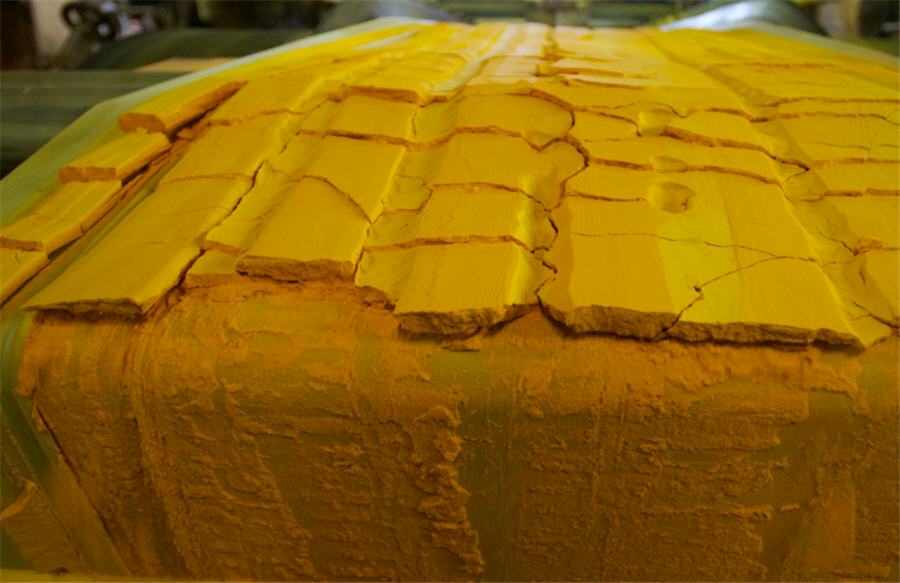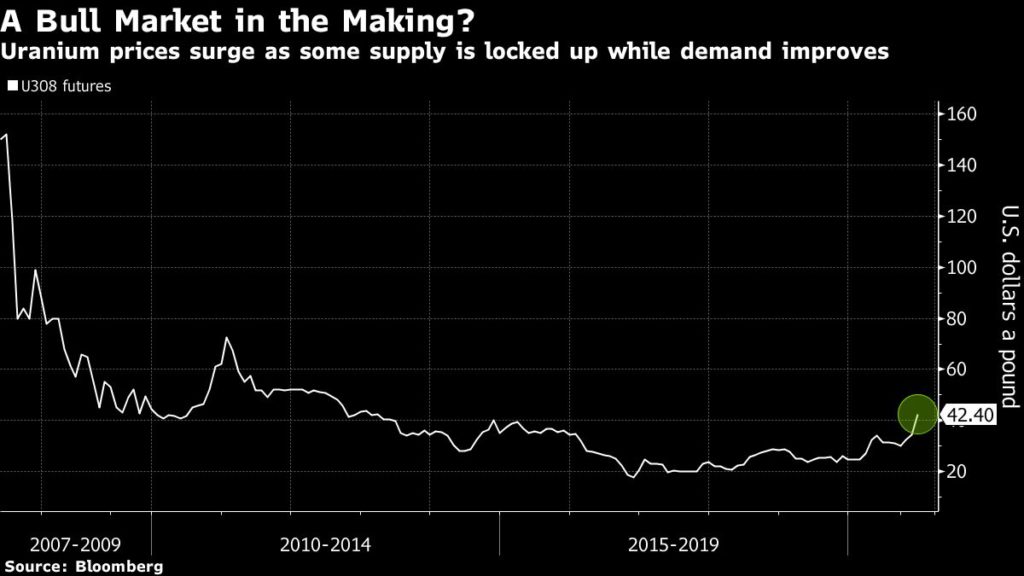New uranium fund signals start of bull run amid tight supply

A new uranium fund that’s snapping up supplies signals the start of a lasting bull run for the commodity used to power nuclear plants.
That’s the view of Nick Piquard, a portfolio manager at Horizons ETFs, who expects prices to soar above $60 a pound in the coming months. That would be about 40% higher from where futures are currently trading in New York.
The Sprott Physical Uranium Trust started buying the commodity on the spot market in mid-August and has amassed over 24 million pounds of uranium, equivalent to about 14% of global reactor consumption. That’s “accelerated the timetable” of a potential bull market by a year or two by locking up a large chunk of supply just as demand prospects are improving, Piquard said in an interview.
“Supply is coming down significantly,” he said. “There’s now reaffirming of the demand side. There isn’t any other reason that uranium shouldn’t be in a bull market.”
Uranium’s demand outlook is improving amid optimism that nuclear could play a part in a global push for a clean energy future. That, along with the start of the Sprott fund, has pushed futures up more than 40% from this year’s low in August. A buying frenzy in uranium companies sent those stocks to their highest levels in a decade.
“People are thinking prices are going higher,” Piquard said.

Uranium futures on Nymex surged to $44.15 a pound on Monday, the highest level since December 2012. That’s due primarily to the Sprott trust, which has been buying physical supply at a rate almost double the daily liquidity for the entire spot market between April and July, according to Brandon Munro, the chief executive officer of Bannerman Energy Ltd., an Australian-listed uranium development company.
The holdings in the Sprott trust essentially make that amount of uranium unavailable to consumers, including utilities, just when there are a few nuclear plants scheduled to come on-line in the coming years, at least in the U.S., according to Piquard.
“The incremental demand from investors probably caught utilities off-guard” at a time when long-term supply contracts are set to get renewed soon, he said.
The recent rally is a huge turnaround. Uranium prices had stayed at historically low levels for the past decade as governments and investors shied away from the fuel after the Fukushima Daiichi nuclear disaster in Japan in 2011.
There are 54 reactors under construction worldwide, the lowest since the 2011 earthquake and tsunami in Japan that prompted countries around the world to rethink their approach to nuclear energy, according to BloombergNEF. Investors like Sprott are betting that the global effort to curb climate change will lead to a revival in carbon-free nuclear energy and drive up demand for uranium.
Concerns over big inventories also weighed on the market. The Sprott buying is removing that concern, Piquard said.
“The big bear case is that there’s too much inventory after Fukushima shut down and how much there’s inventory out there. We’re getting rid of one of the inventories, and the bear case kind of falls part,” he said.
(By Yvonne Yue Li, Will Wade and Aoyon Ashraf, with assistance from Stephen Stapczynski)
More News
PDAC JV video: Namib Minerals restarts Zimbabwe mines, kicks off DRC exploration
A feasibility study is underway to increase the How gold mine's output from last year’s 27,000 oz. total.
April 02, 2025 | 11:54 am
US produces most uranium since 2018, EIA says
Output of the concentrate totaled 375,401 lb. in the fourth quarter, higher than the total production for each of the three prior years.
April 02, 2025 | 10:20 am
{{ commodity.name }}
{{ post.title }}
{{ post.excerpt }}
{{ post.date }}



Comments